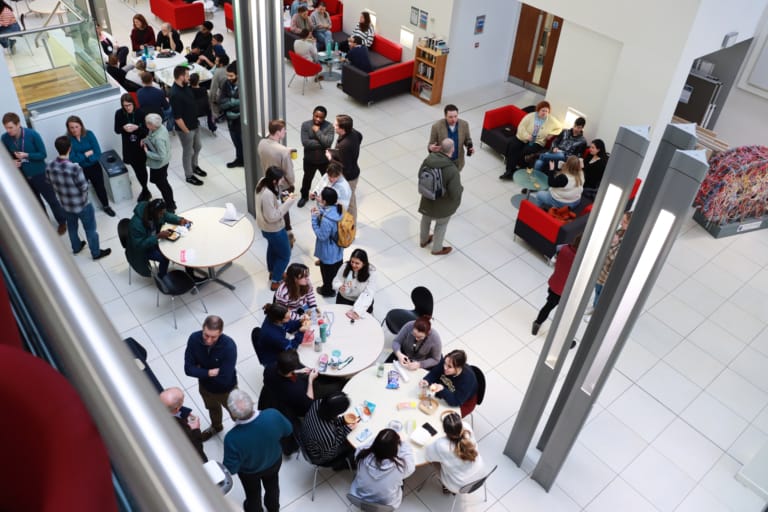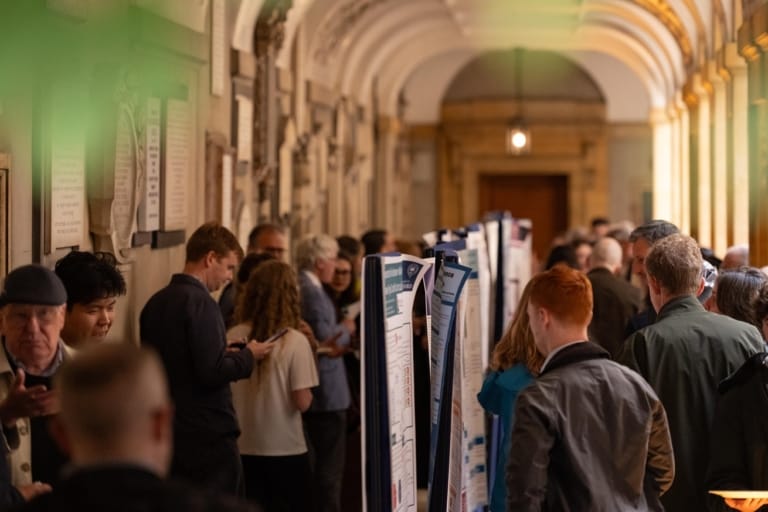Dr Amanda Chaplin received the Lister Prize in 2022. A year on, we catch up with her to learn more about her work and discover how the award will help her pursue her research goals.
Amanda Chaplin had recently taken up her lecturer role at Leicester University when she applied for the Lister Prize.
“I was encouraged to apply by a brilliant research manager who knew some previous winners of the Prize and she was confident that the ideas I had for progressing my research could be helped by the Lister research prize. That advice and support made the application process quite easy,” she recalls.
“The Lister community is brilliant. Since winning the Prize I’ve spoken to other Fellows and members of the panel who came to present the Prize, and everybody’s been really supportive.”
“I’m still teaching, but not as much as I might have been without the award. Having the Lister money means I have more time to spend on research and getting the lab up and running. In addition to our current PhD students, there will be a postdoc funded by the Lister Prize who will help us explore new areas of research.”
Amanda works on a process called non-homologous end joining (NHEJ). It’s a repair mechanism that helps keep DNA whole and functional, preventing disease and protecting cells. When DNA gets damaged, a group of proteins assemble at the breakage point to heal the molecule, reconnecting its broken ends.
“The most dangerous and damaging type of DNA breakage is when there is a break across both strands of DNA. That’s called a DNA double strand break (DBS),” Amanda explains. “And if it’s not repaired, it can cause problems like cancer and cell death.”
NHEJ isn’t the only form of DNA repair, but its implications for health and disease prevention have made it a priority for researchers like Amanda.
“NHEJ has been studied over many years because it’s just so important. There are now therapeutics and drugs which target NHEJ in combination with chemo and radiotherapy, and they have been found to be quite beneficial for cancer therapies,” she tells us.
But how exactly do the repair proteins work, and what makes them so good at preventing DNA catastrophes?
Until recently, scientists couldn’t get a clear picture of what was going on.
“In NHEJ, proteins called Ku 70/80 and DNA PKCS come together to form a holoenzyme complex called DNA-PK. That’s the core of the whole repair mechanism. When I started working in this area as a postdoc, we were looking at the structures using X-ray crystallography. The protein DNA PKCS is huge – it’s the largest single polypeptide protein with about 4000 amino acids – and it’s not well-suited to X-ray crystallography.
“We weren’t able to see how the proteins looked or what their structure could tell us about the NHEJ mechanism.”
Fortunately, a new technology had emerged with the potential to create far more detailed images.
“Cryo electron microscopy (cryo EM) has become huge in the last few years. It created a resolution revolution.”
“We received cryo EM training at the research facility in the Cambridge University Biochemistry Department before the pandemic hit,” Amanda says, “so we were able to get some data and start processing before lockdown.
“Since then, we’ve published quite a few papers, and there’s a growing community of NHEJ researchers including chemists and researchers who are able to study how these proteins function within living cells. What is becoming more obvious through our Cryo-EM studies, is that NHEJ is more complicated than had been originally imagined. There isn’t just one DNA-PK holoenzyme complex, but at least two different dimer forms, possibly with different functions.”
There are several different proteins involved in the NHEJ process, and these seem to play different roles in each half of the dimer pair. Amanda’s recent publication in Science Advances outlines how these different proteins interact in order to fix the DNA molecule.
“The presence of the dimers makes sense, because in a DBS, there are two broken ends of DNA which need a protein to come together as a dimer to hold them together,” she says. “Cryo-EM allowed us to see what the dimers look like, how they hold the DNA, how the other proteins in NHEJ are assembling and what their function is. So cryo-EM has been paramount in understanding this process in greater detail.”
Exploring larger structures
In a recent paper in Structure, Amanda’s team explore even larger structures of NHEJ proteins.
“We go beyond dimers and present a trimer. We think higher-order protein assemblies form when there are multiple areas of damage and lots of DSBs. Maybe there’s a way for DNA-PK to even form higher-order filaments. Or maybe trimers or tetramers form at first in preparation for repairing a DSB, and then during the process of NHEJ these could break up into the different dimers. A lot of people in the field have questions, including my group – we’re wondering how all of this comes about? How and why are all these complex process coordinated?”
The Lister Prize gives Amanda the flexibility to pursue more than one avenue of research, knowing that when new discoveries are made there will be funding to explore them.
“As well as helping me further ideas on classical NHEJ, the money will help explore other ideas such as the role of NHEJ in virus infection. DNA-PK is believed to be involved in the innate immune response, bonding to viral proteins and alerting the immune system to infection. Viruses produce proteins that bind to DNA-PK and prevent this from happening, and we want to know how they do this.
“Our Lister postdoc will start investigating some of these proteins and using cryo-EM to look at the structures these complexes form. Eventually we also want to look at therapeutics – how drugs can bind to these proteins, and how different therapies can target these structures and pathways. There’s lots to be doing!”
We are thrilled to be supporting Amanda’s work and we look forward to seeing her new discoveries emerge and develop in the future.
Learn more about Amanda’s work: https://le.ac.uk/people/amanda-chaplin



